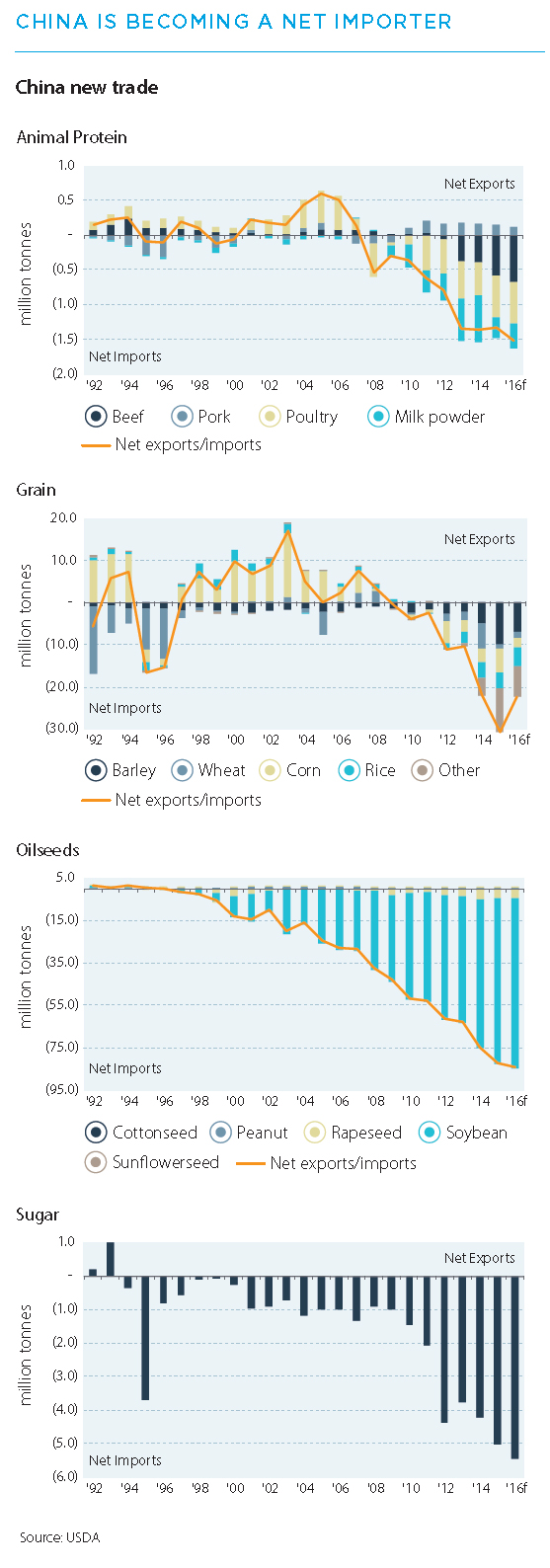-
Big data and analytics are big news. The opportunities data analytics present for the global agricultural sector are astonishing yet in many ways they are just the next step in a process which has been happening for centuries.
" Big data has huge potential to transform the way agricultural business is done – from real-time financing of commodities to seamless cross-border customs processing."
Michael Whitehead, Sector Head of Food, Beverages and Agribusiness at ANZAround 4,000 years ago, the Mesopotamians used their own version of big data to monitor the impact of salt on different crops, using the data to switch from growing wheat to far tougher and more productive barley crops.
Today, the use of data analytics on a barley crop doesn't just track where every seed is planted and where different fertiliser is needed for every centimetre of a paddock, it builds in a multitude of real-time information to create a far more productive, profitable and sustainable crop.
We can use this data to uncover correlations and trends, then use these discoveries to enhance processes – essentially to do business better.
For an organisation like ANZ, the opportunities and challenges of playing a leading role in the field of data and analytics are multi-layered. Our goal in growing the science of data and analytics is not just to move the bank to the next generation of operating but to create similar opportunities for our customers across all industries and sectors.
PRIME TIME
For agriculture in Australia, the increasing focus on analytics comes at a time of great opportunity. A recent report from ANZ argues Australia could increase wheat production by 20 per cent, from 25 to 30 million tonnes by 2030, which would see the sector generate an additional $A1.3 billion in value to a total of $A7 billion.
In late 2015, a separate report suggested a rise in annual milk production (8.4 to 15 billion litres per year) could net Australia's dairy industry another $A1.3 billion in annual export value by 2025.
The resurgence of rural and regional Australia is real. We are seeing fresh evidence of renewed confidence almost every week.
INTENSE FOCUS
Globally the agricultural sector is increasingly under intense focus. The world seeks to feed a population set to grow by two billion people in less than 25 years – as well as a large growing middle class, particularly in China – through new technology and investment.
This impacts every layer of society – from farmers to consumers globally, and across governments and the private sector.
Agriculture has already seen its share of technological innovation, from robotic dairies to satellite crop mapping.
But the potential implications of using data to its full potential could stretch right across the immense agricultural supply chain.

Hack attack
ANZ has been teaming up with other companies and institutions to share data capabilities and knowledge. In April our TSO Strategy and Planning team is partnering with UNSW, IBM and Thomson Reuters to run a Data Science Hackathon – bringing bright minds together to develop data driven insights.
The event builds on the success of a similar venture in August 2015, where we had more than 60 students from business and technology focus on efficiency opportunities in operations management. The collaboration represents a new way of working with a digitally enabled workforce.
This year we're focussing on agriculture – in particular, how to utilise substantial volumes of relevant data to develop a greater understanding of the drivers of trade flows in beef, dairy and grain.
While these sectors are vital to the Australian economy, they also present the challenge of being influenced by a complex and unique set of variables – from the weather to exchange rates, trade agreements and economic trends, in both import markets and competitors' markets.
This would encompass not only farmers, processors, exporters, retailers and consumers, but also regulators, banks and other capital providers.
Digital technologies are connecting food producers with consumers in new ways. The world is changing from one driven by businesses to one shaped by the consumer – with data analytics powering the transformation.
This can be seen in many ways, including how data management is being used to map and categorise soil in the hope it will lead to greater food security, better soil health and long-term benefit to the global agriculture sector. The specific composition of different soils, their growing qualities and productivities for different crops are all aspects to be mapped at varying levels of complexity.
An ambitious and impressive CSIRO-led global project essentially is studying the big data of bees. Bees continue to die in record numbers, threatening the global honey industry - and we still don't know why (although my guess is it's probably a bee cult).
Big data has huge potential to transform the way agricultural business is done – from real-time financing of commodities to seamless cross-border customs processing and radically faster, more-personalised delivery of food goods to consumers. There is so much more to come.
Michael Whitehead is Sector Head of Food, Beverages and Agribusiness at ANZ
The views and opinions expressed in this communication are those of the author and may not necessarily state or reflect those of ANZ.
EDITOR'S PICKS
-
Australia's grains industry is fundamental to the agribusiness sector. Not only does it create value in its own right but supports revenue growth in domestic and export markets across Australian agribusiness.
2 March 2016 -
The resurgence of rural and regional Australia is real. We are seeing fresh evidence of renewed confidence almost every week.
4 March 2016 -
The cult of analytics seems a million miles removed from dirt, but data management is being used to map and categorise soil in the hope it will lead to greater food security, better soil health and long-term benefit to the global agriculture sector.
